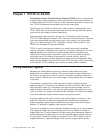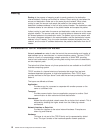
Table 1. Classes of Networks (continued)
Network Class
Range of First
Byte Network ID Host ID
Maximum Number
of Hosts per
Network Class
Notes:
1. Although 127 is a class A network ID, it is reserved for loopback addresses and cannot
be assigned.
2. Not supported by AS/400 except for the limited broadcast address of 255.255.255.255.
If the first byte of an Internet address is in the range 0 to 127, it is a Class A
network. These are very large networks. The host IDs can range from 0.0.1 to
255.255.254, which allows for a maximum of 16,777,214 hosts. An example of a
class A Internet address is 9.5.1.2. The network ID is 9 and the host ID is 5.1.2.
If the first byte of an Internet address is in the range 128 to 191, it is a Class B
network. These are medium-size networks. The host IDs can range from 0.1 to
255.254, which allows for a maximum of 65,534 hosts. An example of a class B
Internet address is 150.244.1.241. The network ID is 150.244 and the host ID is
1.241.
If the first byte of an Internet address is in the range 192 to 223, it is a Class C
network. These are relatively small networks. The host IDs can range from 1 to 254,
which allows for a maximum of 254 hosts. An example of a class C Internet
address is 221.6.1.244. The network ID is 221.6.1 and the host ID is 244.
If the first byte of an Internet address is in the range 224 to 239, it is a Class D
network. These addresses identify multicast networks. The first 4 bits in a class D
Internet address identify the Internet address as a multicast address. The rest of the
bits (28) identify a specific multicast group.
If the first byte of an Internet address is in the range 240 to 255, it is a Class E
network. These addresses are undefined and experimental at this time. AS/400
does not support class E Internet addresses except for the limited broadcast
address of 255.255.255.255.
Understanding network classes and how the Internet address is divided into
different classes is important for the discussion of subnetworks in the following
topic.
IP Subnets
An IP subnet is the division or split of a TCP/IP network. When you divide an IP
network into multiple subnets, you avoid having to request additional IP network
addresses and alleviate the waste of existing addresses. ″Subnetting″ is frequently
performed on class A and B internetworks because they are larger and contain
more available host address space.
Also worth noting is the fact that subnets can be assigned locally and the process
of subnetting can remain transparent to remote networks.
Chapter 1. TCP/IP on AS/400 5


















